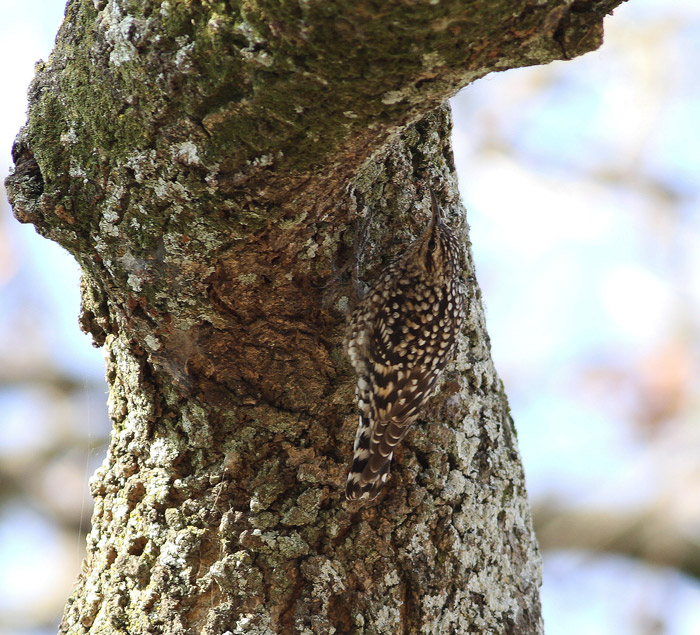 | EXCITING BIRD
**************
Many thanks, THOMAS, for a fine photo of this
'STRANGE' bird.
Difficult to find in E. Africa: John WILLIAMS,
1963, stated 'very uncommon' in Kenya and Uganda.
But Your familiarity with Ethiopia 'made' this
photo?
___________________________________
Here some aspects of Spotted C.:
1.
It is the only Salpornis species, and the ONLY
Treecreeper in tropical Africa
- but is also distributed in INDIA!
(Orig. described from India, 1831).
Hard to explain when and how this NON-migratory
bird found its way to the trees in equatorial
Africa (north to Ethiopia).
2.
Its tail is NOT stiff, used as support on stems,
but is feathered like e.g. Sitta's and
Wallcreeper's.
Long hind claw like Creeper.
3.
Heavy body: Spotted C. is 1 cm longer than most
Creepers, but has DOUBLE weight.
4.
Can ,Sitta-like, sit vertically on a stem with
tail up, head down and 'turned upwards out'!
5.
Its nest is a normal OPEN cup(!), NOT hidden in
a crevice or hole like other Creepers', Sittae
and Wallcreeper's.
6.
European Creepers and Sitta have whitish, dotted
eggs, whereas Spotted's are dotted 'pale turquoise
BLUE' (Praed and Grant, 1955).
So, hardly surprising that (Fjeldså?) in 'Danske
Navne...' 2008 states that Salpornis (Spotted C.)
is 'closer related to Sittidae and should be moved'
[from Treecreepers to Nuthatches/Wallcreeper].
__________________
DANSK
Utroligt at standfuglen Plettet Træløber er udbredt
i både Indien og Afrika.
Som Spætmejse kan den sidde med hovedet nedad og
har en hale som Spætmejse og Murløber (dvs. IKKE
stive støttefjer som Spætte).
Æggene er Blå og lægges i en ÅBEN rede - modsat andre
Træløbere og Spætmejses!
'Danske Navne...' 2008 anfører, at Plettet T. bør
flyttes fra Træløbere til Sittidae, dvs. Spætmejser/
Murløber.
--------------
Plettet T. er svær at finde i Ø.Afr., så stor tak til
THOMAS for at bringe et godt Æthiopien foto.
cc: FJELDSÅ.
KR / VH ............... C. |


